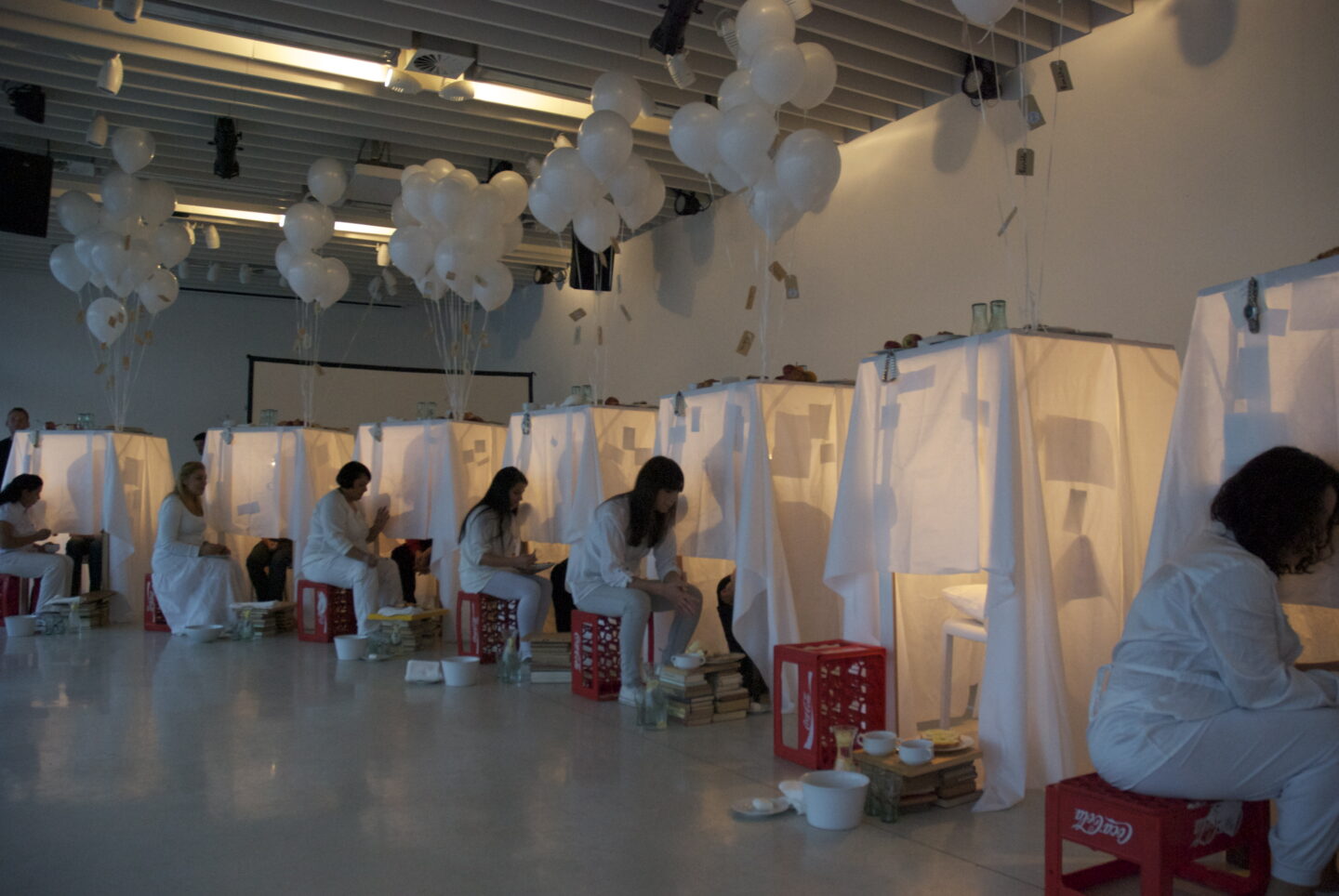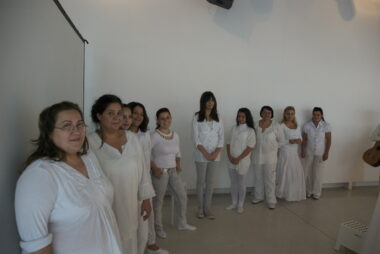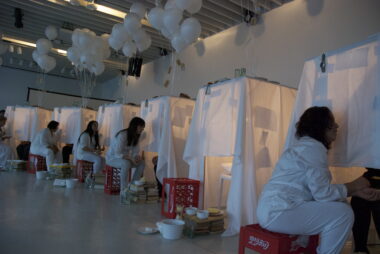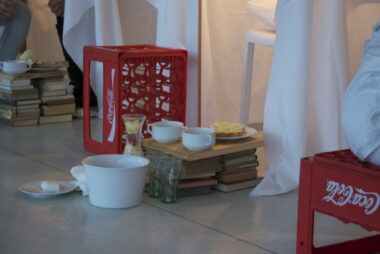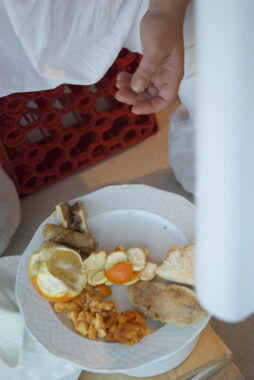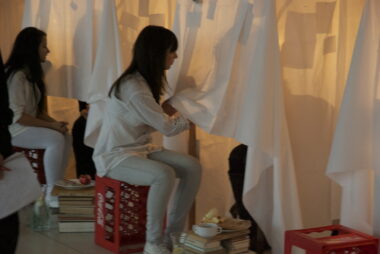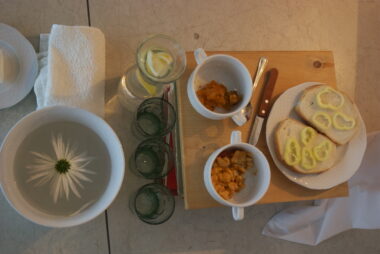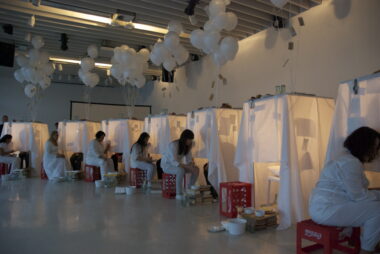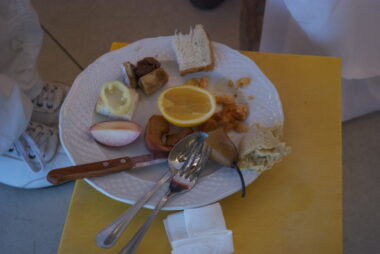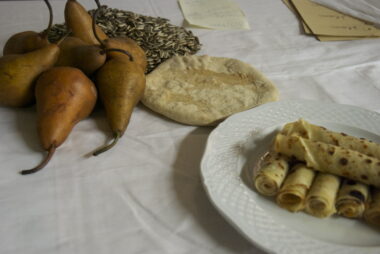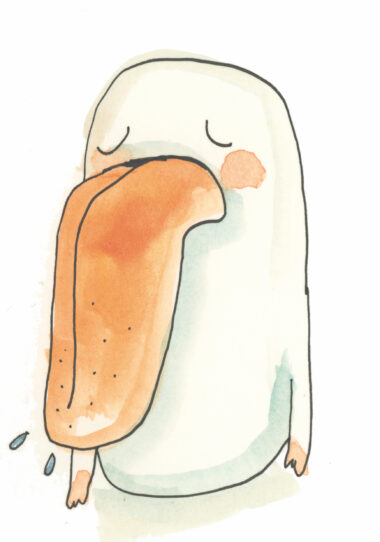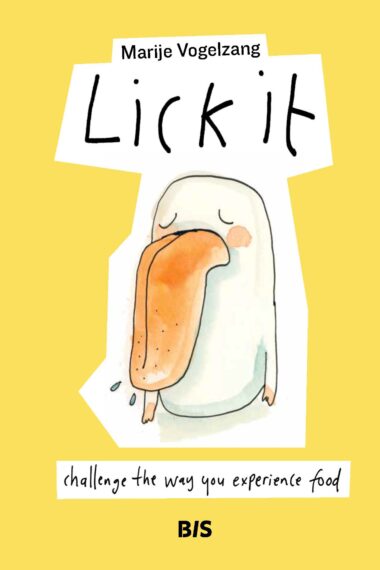How can we shift the power balance between majority and minority?
Hungary is not the only country that deals with an extremely segregated society where Roma are fiercely being rejected by the majority of Hungarians. Frictions between majority- and minority groups are omnipresent phenomena while, as an outsider it is hard to see the difference between them. We are all just humans. We shit, we eat, we love and play. We all have mothers and we all have been fed by someone. I do not want to focus on conflict. I use food to focus on what connects us.
A 4 day performance where Roma Women have fed over 400 visitors while telling their life stories.
In the white space of the A38, a boat on the Danube river, are 10 separate installations presented. 10 units with a seat for one guest at a time. The installation is made of tables with extended legs covered with white cloth.
Participants take place in the installation and become separated by the rest of the space. They cannot look outside trough the textile.
Every participant will be served by one Roma woman. She will feed the food that she has personal memories of. She will feed the participant moist food with a spoon, dry things with her hands. Feeding is a very intimate ritual. A rare thing happening in life. Especially when it’s done by a stranger.
The whole performance will be a ritual. First the woman washes her hands. The visitor cannot see who serves him but he can see her hands. While doing this she starts telling him her life story. As if she would be speaking to a friend confiding him into her private story. Gently, like a mother to her child.
The visitor cannot see her face or see her eyes. This is essential. He needs to feel like there are no social codes or rules he needs to follow. She will show him the dishes that have memories for her. She will feed him with her food while talking about her life. She is in control but in such a kind and loving way that he feels he can relax and absorb the story, the food. The gentle touch.
Inside the installation the participant sits in a peculiar environment. There is a small musical organ inside that he can play with, there is a big paper roll with napkins that he can use. There are many pieces of paper with written texts and pictures of family pinned on the inside. All written by the woman who feeds him. Ideas he can read about, recipes, dreams. There is a lightbulb hanging on the ceiling making a kind of children’s hiding place.
The ladies wear a scent on their wrist. This is the only scent they wear. It is a scent that has a personal meaning to them, is part of the story and is one of the ingredients in the food she serves. Outside the installation is a set of white balloons filled with helium plus the scent of the particular woman. The scented balloons will release their smell for about 9 hours and every visitor receives the scented balloon to take home.
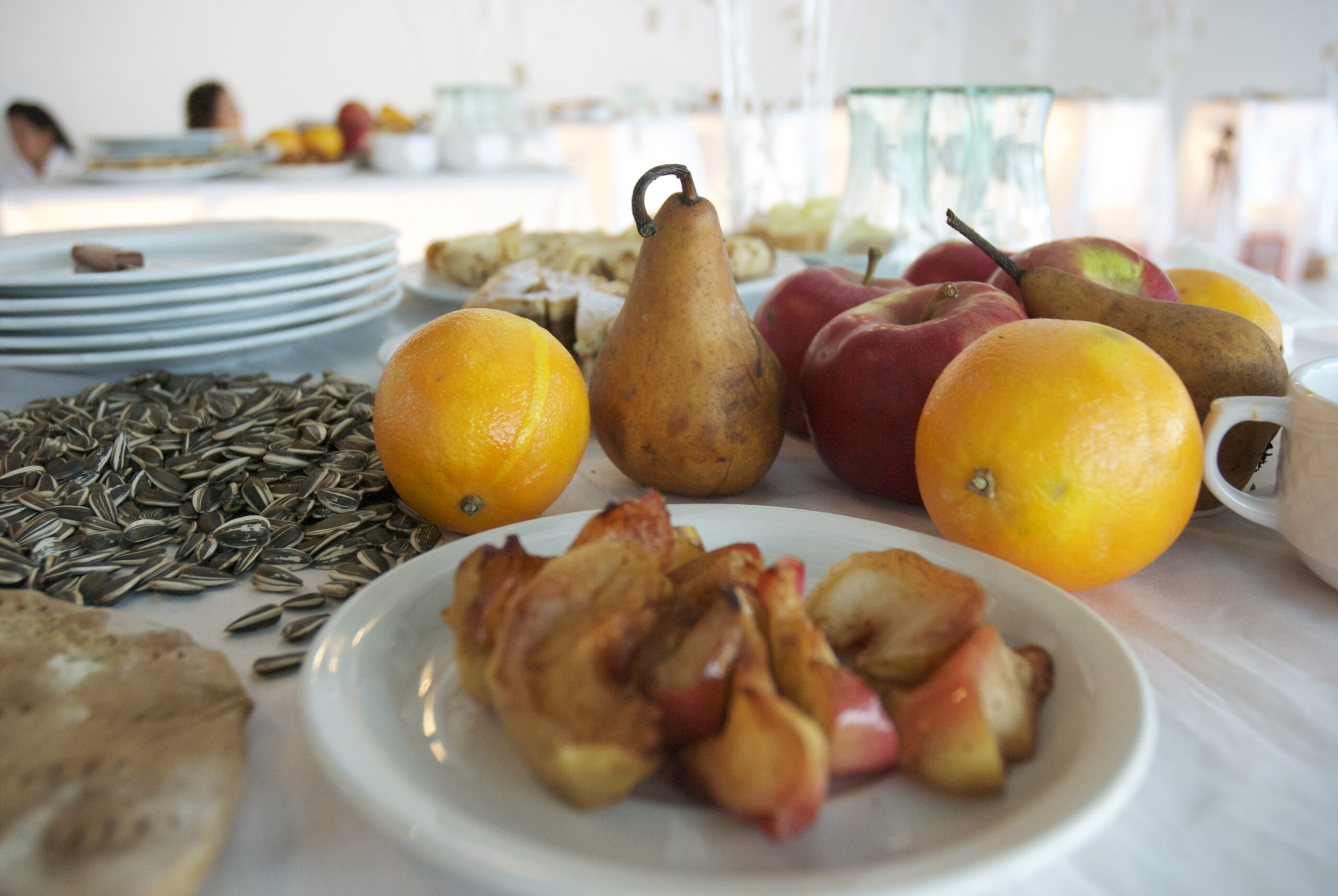
Réka Matheidesz ceo WAMPMarije’s eating performance Eat Love Budapest was one of my most beautiful and moving projects as CEO of WAMP. The performance of feeding Roma women was positively shocking and refreshing at the same time. The audience not only loved it but we received a lot of feedback on its positive social impact.”
After the food is eaten and the story is over the Roma woman disappears. The visitors exit the installation and receive one balloon from a helper. The balloon can be taken home as a scent memory of the experience.
When finishing the experience the participant will never know who it was who fed him. The reason why I don’t want the participants to meet the lady is because humans generally have a way of creating exceptions for individuals of minority groups they meet in person. We can think: ‘well, I am not a big fan of Roma people but SHE was nice.’ In that way they do not have to think about the bigger picture and can ‘file’ the woman in their brain system. By not getting to see or know who she is I was hoping that people would go out in the street after the experience, see a gypsy man or women and think: ‘Maybe that’s her!’ Or, ‘Maybe that’s her brother.’
The more abstract connection can be made the better as everybody has a story behind him or her.
Reactions to this project have been very emotional. Most people were touched in their heart. The debate of Roma acceptance in Hungary is very urgent and the feedback of many visitors was that finally this was a completely different and refreshing take on it. You could say that the project was going beyond the Roma theme and bringing it to a higher level of life. But perhaps it is a lower level. The level of basic human- and motherly love. Perhaps that’s where we need to look for connection. In food. In kindness and storytelling.
Eat Love Budapest was commissioned by
Wamp
and Chili and Vanilia
Supported by
The Dutch Embassy in Hungary
with help of Krisztina Arvai-Nagy
Scents-concept by
Bernardo Fleming
supported by IFF

